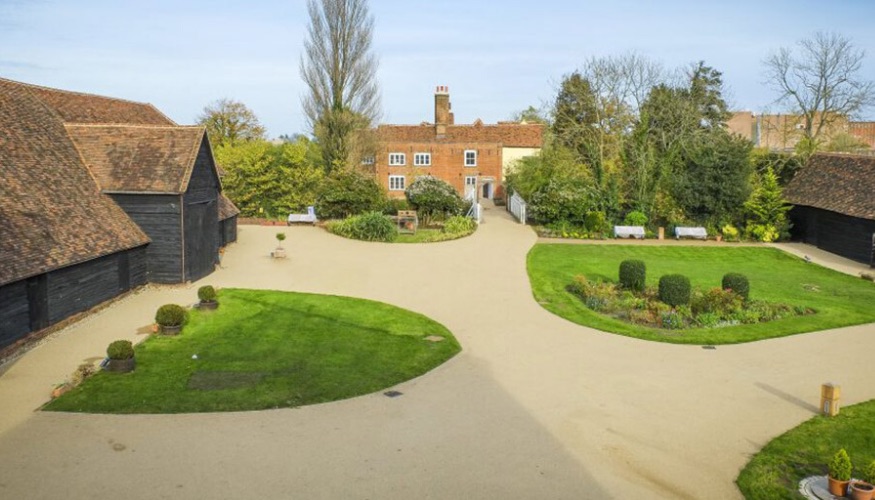Held as an annual event, the month of May is ‘Local History and Awareness Month’. The aim of this month is to help people to become more aware of their wonderful local history, and Pinner is certainly no exception!
Paige & Petrook are proud to have been part of the Pinner community for over fifty years and much has changed in the area since Gerald and Gloria Petrook first took over the business as sole owners in 1967. We recently delved into the fascinating history of Paige & Petrook (you can read more about it here) and so we thought we’d take this opportunity to explore some of the other historical landmarks and buildings in Pinner and the surrounding areas.

Headstone Manor
Headstone Manor & Museum (also known as The Harrow Museum) is the local history museum for the London Borough of Harrow. The manor itself is a 14th century Grade I listed moated manor house and the historic 14th century Moat is currently being restored as part of a wider project that has been funded by the National Lottery Heritage Fund and the National Lottery Community Fund; the GLA via their Green Capital grant and further funding from Harrow Parks, Green Grid and Developer Contributions.
Headstone Manor is steeped in history, with the land on which it standards forming part of the ‘manor’ of Harrow which was owned by Wulfred, Archbishop of Canterbury in 825 AD. Denochronological dating of the timbers has revealed that construction of the manor began in the early 1300s, with Archbishop John Stratford buying more of the land surrounding the manor in 1344 and using it as his main residence. After Reformation, the property was surrendered to Henry VIII and he remained the ‘Lord of the Manor of Headstone’ for less than a week before he sold it to court favourite Edward North. Following this transaction, the property remained in private ownership with a tenant farmer for nearly four hundred years.
Much of the land was sold off in the 19th and 20th centuries for housing developments as the manor slowly fell into a state of disrepair. In 1935 Hendon Rural District Council bought the site and created Headstone Recreation Ground and the responsibility for the grounds was passed to the London Borough of Harrow after a reorganisation in 1968. Following intense local campaigning to help bring the site back to life, it was turned into a museum in 1986 and after receiving further regeneration from a Heritage Lottery Fund, the museum was officially reopened in 2017.
Heath Robinson Museum
The Heath Robinson Museum is a permanent exhibit in Pinner which celebrates the fascinating story of artist Heath Robinson, as well as displaying a collection of almost 1,000 pieces of original artwork and related items. It was opened in 2016 and is a partnership between The West House and Heath Robinson Museum Trust (HRMT) and The William Heath Robinson Trust (WHRT). The museum is located in Pinner Memorial Park, which is close to where he lived and worked.
Born in 1872, William Heath Robinson was an English cartoonist, illustrator and artist who was best known for his drawings of highly amusing, intricate machines designed to achieve the simplest of tasks. After marrying Josephine Latey in 1903, he moved to Pinner in 1908 to a property in Moss Lane, which is commemorated to this date with a blue plaque. He died in 1944 during the Second World War and is buried in East Finchley Cemetery.
West House/Pinner Memorial Park
West House was formerly the home of the grandson of Admiral Lord Nelson and Lady Hamilton and it remains one of the few old houses in the area still standing within its original grounds. West House and Pinner Memorial Park were bought by the people of Pinner after the Second World War with the intention of it becoming a war memorial. Over the years, the house fell into disrepair until The West House and Heath Robinson Museum Trust successfully raised over £1.5m to restore and reopen it in 2010. It now hosts the Verden Gallery, Daisy’s in the Park Cafe and the Shrine and Books of Remembrance.
Pinner Hill Farm and Clock Tower
Prior to the 19th century, the site on which Pinner Hill Farm is located formed part of Pinner Common. It was awarded to Mr. Robert Tubbs following the Enclosure Award of 1803-17 and it was subsequently passed to John Baker Sellon who owned Pinner Hill House. The entire estate was then sold to Albert Pell in 1821 and it was he who built two cottages and a ‘model’ farm just down from his mansion. The historical clock tower was part of Pell’s model farm construction and bears a crest with the date 1862 on it. Fast forward to the present day and the estate is now separated, after it was broken up for residential development and sold in 1919. The landscaped parkland of Pinner Hill House is now home to the Pinner Hill Golf Course, which was laid out in 1927. Lawrence and Pat Camps have lived at Pinner Hill Farm for more than 30 years and have dedicated their efforts to painstakingly restoring the historical buildings which remain on the site.